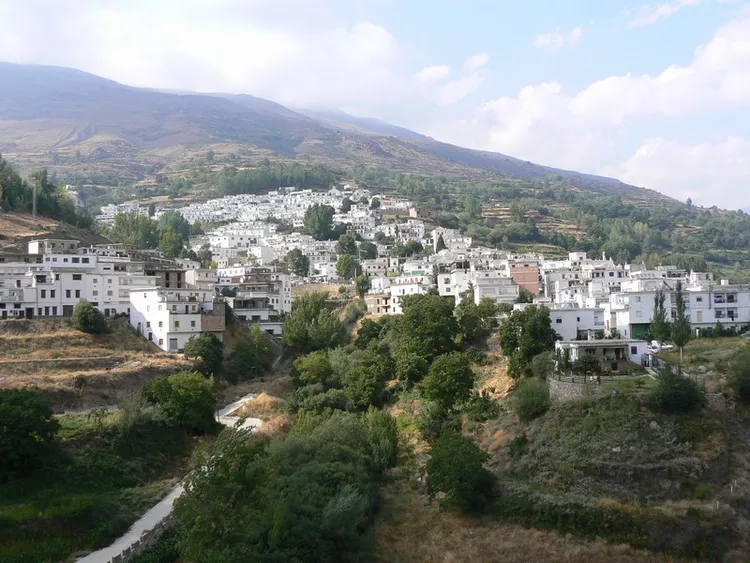Summary of Alpujarras
Discovering the Alpujarras: A Hidden Gem in Spain
The Alpujarras, located south of Granada, is a captivating mountain range known for its picturesque villages and breathtaking countryside. As a top destination for outdoor enthusiasts, visitors can explore a variety of hiking trails, making it an essential stop on any Spanish adventure.
Introduction to Alpujarras
This region is rich in natural beauty, where knowledgeable travelers will encounter numerous beneficial herbs and plants along the roadside. While prickly pears and blackberries are tasty, it’s advisable to purchase these fruits in local villages to avoid potential mishaps like sharp thorns or stubborn stains!
Guided Tours of the Alpujarras
Given the fragmented layout of its villages and limited public transportation, exploring the Alpujarras can be challenging without a private vehicle. Therefore, consider joining a guided tour to uncover the region’s highlights effortlessly, allowing you to enjoy the scenery without the stress of navigating the roads yourself.
Best Time to Visit
Experience the vibrant culture of Alpujarras by timing your visit with local festivals. One notable event is the Fiesta de Agua, a whimsical water fight celebrated on June 24 in Lanjarón. Additionally, Bérchules hosts a unique New Year’s Eve celebration in August, while Cádíar delights visitors with its wine-filled fountains in October.
Three Things to Do
- Hiking: Traverse the region’s exceptional hiking trails that cater to all skill levels.
- Spring Water Sampling: Experience the pure waters of Lanjarón and the medicinal quality of Fuente Agria near Portugos.
- Gastronomic Delights: Savor some of the finest jamón (Spanish ham) the country has to offer.
How to Get to the Alpujarras From Granada
- By Car: Driving is the best way to explore this region, particularly if you want to visit multiple villages in one day. To reach Lanjarón, follow the signs along the A44, and ensure to have a map handy for navigating the winding roads.
- By Bus: Public transport options are limited, allowing visits to only a couple of towns per day. However, if you plan to stay in one town for several days, using the bus can be a viable option. Check for available services through Movelia.
Where to Next?
Since you are already halfway to the coast, consider visiting the beach if you have a car. Conversely, traveling by public transport may require you to return to Granada to continue your journey.
Villages of the Alpujarras
The Alpujarras contains numerous enchanting towns. However, visiting them all will demand at least two days, not taking into account any hiking or exploration of the stunning surrounding terrain.
Lanjarón
- Famous for its mineral-rich water, Lanjarón features a renowned health spa that utilizes five natural springs.
Orgiva
- This larger town boasts decent public transport links with Granada and Malaga. Nearby, there is a Buddhist retreat open to visitors from 3 pm to 6 pm.
Pampaneira
- One of the most picturesque villages in the Alpujarras, Pampaneira shares the scenic Río Poqueira gorge with nearby Bubi ón and Capileira, with a delightful stream winding through its streets.
Bubión
- Offering a great base for hiking, Bubión is conveniently located on the GR7 hiking route.
Capileira
- The highest village among the trio, Capileira serves as an excellent starting point for those eager to ascend the majestic mountain Mulhacén.
Portugos
- This quiet town is home to Fuente Agria, a natural spring known for its high iron content. The water, while clear, leaves a distinct orange residue as it flows.
Trevélez
- Recognized as the largest ham-producing town in one of Spain’s leading ham regions, Trevélez also boasts quality wines that are worth sampling.
Bérchules
- This small town is notable primarily for its unique New Year’s Eve in August festival, drawing visitors each year.
Cádiar
- A neighboring village to Bérchules, Cádiar celebrates the filling of its fountains with wine each October, creating a festive atmosphere.




